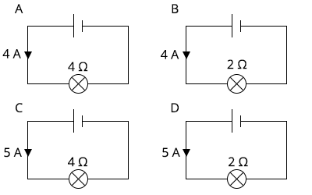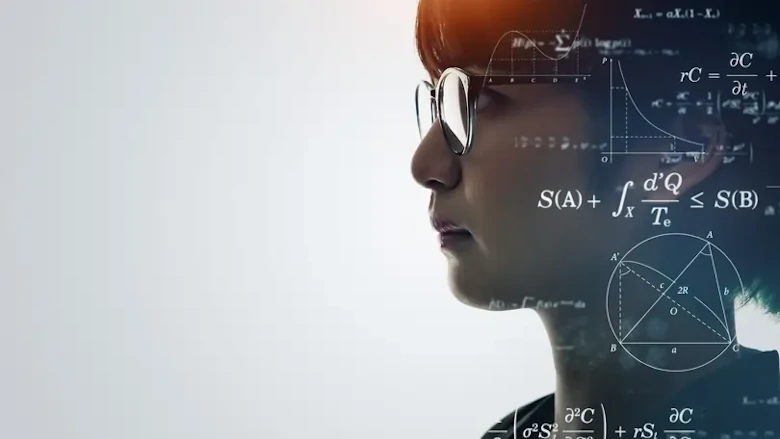Practical Electricity
In this article, we will learn about Measuring Electrical Energy and the Sources of Electrical Energy. We will explore
- The common uses of electricity in a domestic home, especially with heating and lighting effects.
- The formula \(\displaystyle{P = VI =I^2 R = \frac {V^2}{R}}\), and when to use the suitable formula to solve related problems.
- The practical unit to measure electrical energy, which is kWh, and how it can be calculated.
Uses of Electricity
Electric Heating
Most household appliances that convert electrical energy to thermal energy have a heating element that is made up of nichrome.
Nichrome is used because it has a high resistivity and can withstand high temperatures due to their high melting points. If a material of low melting point is chosen, it would melt.
Nichrome has high resistivity, and as such, when an electric current passes through it, it will heat up rapidly.
Electrical Lighting
Most household appliances that convert electrical energy to light energy have a filament that is made up of tungsten.
Tungsten is used because it has high resistivity and a high melting point (3400°C).
A filament (tungsten wire) has a small cross-sectional area and is coiled. These factors further increase the resistance of the tungsten wire.
When an electric current flows through a filament, it is heated to about 2500°C. This intense heating effect generates light.
Game session
Match each term to its respective equation.
| Power (P) = |
|
|---|---|
| Potential Difference (V) = |
|
| Current (I) = |
|
Answer:
\(\begin{align} Power \; (P) &={work \over time}\\[2ex] Potential \; Difference &= {work \over charge}\\[2ex] Current \; (I) &= {charge \over time} \end{align}\)
Measuring Electrical Power
There are 3 common ways to express the formula for finding electrical power.
- \(P = VI\)
- \(P = I^2 R.\) This equation is derived when we substitute \(V = IR\) into the above equation (according to Ohm's law).
- \(\displaystyle{P = \frac {V^2}{R}}\) This equation is derived when we substitute \(\displaystyle{I= \frac {V}{R}}\) into the 1st equation above (according to Ohm's law).
Depending on the given or known quantities, and which quantity is required to be calculated, the appropriate formula is to be chosen.
Question 1:
A 40-ohm resistor is connected in series with a 6.0 V battery. What is the power consumed by the resistor, assuming it is the only component in the circuit?
- 0.15 W
- 0.62 W
- 0.90 W
- 5.6 W
Solution:
(C) 0.90 W
Explanation:
Using ,
\(\begin{align*} P &= \frac {V^2}{R} \\[2ex] &= \frac {6.0^2}{40} \\[2ex] &= 0.90 \; W \end{align*}\)
Question 2:
A wire dissipates power P when a current I is passed through it. What will be a new power dissipated in the wire if the current passing through it is now 4 times the original current?
- P
- 2P
- 4P
- 16P
Solution:
(D) 16P
Explanation:
The new current passing through the wire is now \(4I\).
The formula of \(P=I^2R\) will be used. (Other forms of the Power equations cannot be used because V and I both are changing, only R is constant. So we need to use this equation to derive our answer).
Every wire has the same resistance here.
Since current is now 4 times,
New \(P = (4 I)^2R\)
We will replace \(I^2 R\) With \(P\).
So, it will be,
\(= 4^2 P\)
\( = 16 P\)
Note: Selection of the equation is crucial in this step.
Measuring Electrical Energy
Units For Electrical Energy
Power is also defined as the rate of energy conversion.
\(P =\frac {E}{t}\)
Therefore, \(E = Pt\)
\(E= VI t\)
The SI unit of electrical energy is Joule, but for practical purposes, kWh (kiloWatt hour) is the common unit used.
Do you know why kWh is used practically?
It is because electric devices are usually used for hours and not just for a few seconds. Thus, it does not make any sense to measure energy in joules, which uses seconds in its calculations. It makes better sense to measure in kWh as the value calculated will be more manageable.
Question 3:
The electric current in a resistor is 0.30 mA, while the potential difference across the resistor is 3.0 V.
What is the heat produced by the resistor if the circuit is left running for 4.0 minutes?
- 3.6 mW
- 0.22 J
- 0.22 mW
- 0.90 J
Solution:
(B) 0.22 J
Explanation:
\(\begin{align} Energy &= Power × time \\[2ex] &= VI × t \\[2ex] &= ( 0.30 × 10^{-3} × 3.0 ) × ( 4.0 × 60 )\\[2ex] &= 0.22 J \quad \text{( 2 s.f. )} \end{align}\)
Example 1:
The S.I. unit for energy is joules (J). The unit of a kilowatt-hour (kWh) is used for practical purposes as the unit of joules is too small to be used.
How much energy is equivalent to 2 kWh?
Solution:
\(\begin{align} 2 \text{ kWh} &= 2 \text{ kW} \times 1 \text{ hr} \\[2ex] &= 2000 \text{ W} \times (60 \times 60) \text{ s} \\[2ex] &= \text{ 72 00 000 J}. \end{align}\)
For \(\text{ 1 kWh}\), we will divide the above value by \(2\).
Therefore, \(\text{1 kWh = 3.6 × 106 J}\).
Question 4:
The cost of electricity is 27 cents per kWh. What is the cost of using 1000-1200 W iron at its maximum power for 45 minutes?
- 12.2 cents
- 14.6 cents
- 24.3 cents
- 1458 cents
Solution:
(C) 24.3 cents
Explanation:
Maximum power \(= 1200\,\text{W} = 1.2\,\text{kW}\)
\(\text{E= P t}\)
We used it for 45 minutes, and the energy consumed \(\begin{align}\\[2ex] &= 1.2 \times \frac{45}{60}\\[2ex] &= 0.9 \,\text{kWh} \end{align}\)
So,
Cost\(\begin{align}\\[2ex] &= 0.9 \times27\\[2ex] &= 24.3 \,\text{cents} \end{align}\)
Sources of Electrical Energy
There are two types of sources of electrical energy: Renewable and Non- Renewable Energy.
Renewable Sources
Energy from sources that can be replenished naturally is called renewable energy.
Examples: solar, hydroelectric, wind
Non- Renewable Energy
Energy from natural sources that cannot be replenished at a sustainable rate is called a non-renewable source of energy.
Examples: Fossil fuel and nuclear power.
Conclusion
In this article, we learned the uses of electricity in a domestic home, especially with heating and lighting effects.
We studied the formula \(\displaystyle{P = VI =I^2 R = \frac {V^2}{R}}\) and when to use the suitable formula to solve related problems. We learnt the practical unit to measure electrical energy, which is kWh, and how it can be calculated.
The article has been written keeping in mind the students studying the Secondary 4 Physics coursework.
| Continue Learning | |
|---|---|
| Electromagnetic Spectrum | Sound |
| Static Electricity | D.C. Circuits |
| Electromagnetic Induction | Electromagnetism |
| Magnetism | Current Electricity |
| Practical Electricity | |
Test Yourself
Which of the following mainly converts sound energy to electrical energy?
(A) An electric fan mainly converts electrical energy to mechanical energy.
(B) A microphone mainly converts sound energy to electrical energy.
(C) An incandescent bulb mainly converts electrical energy to radiant energy.
(D) A loudspeaker mainly converts electrical energy to sound energy.
Ans: (B) Microphone
Which of the bulbs below consumes the greatest amount of power?

P = I2R
(C) P = 52 × 4 = 100 W
Ans: (C)
A person uses a 3kW electric furnace for 2 hours and 2kW heater for 4 hours. What is the total cost if the price of electrical energy is 5 cents per kilowatt-hour?
Total energy consumed = (3 × 2) + (2 × 4) = 14 kWh
Cost = 14 × 5 = 70 cents
Ans: (C) 70 cents
Which of the following conditions is not considered a hazard to the user?
I: Overloading of appliances in one socket.
II: Exposed wires due to damaged insulation.
III: Handling electrical appliances in damp conditions.
IV: Connecting the earth wire to the casing of the appliance.
Connecting the earth wire to the casing actually earths the casing and helps to prevent electrocution of the user should the live wire touches the casing.
Ans: (D) IV: Connecting the earth wire to the casing of the appliance
What is the function of a circuit breaker?
I: To protect against fires caused by overloading circuits.
II: To reduce the amount of energy used by household appliances.
III: To reduce the voltage of the electricity that comes into your home.
IV: To prevent light bulbs from burning out.
A circuit breaker acts similarly to a fuse. When the current through the circuit exceeds the rating of the circuit breaker, it will trip and prevent any further current from flowing through. Dangers posed by large currents are thus avoided.
Ans: (A) I: To protect against fires caused by overloading circuits.


 SG
SG  VN
VN 










